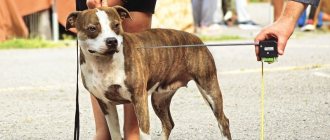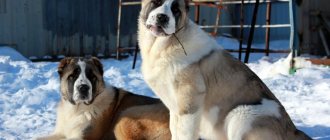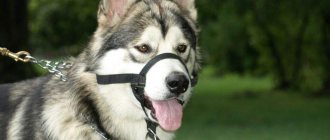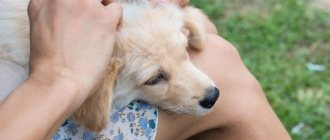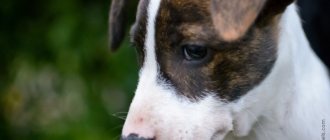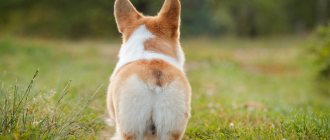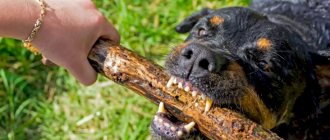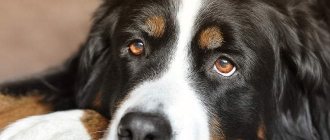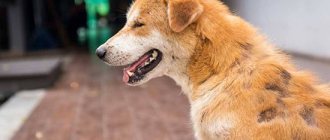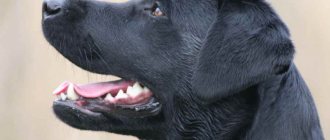With the arrival of autumn, the fur of our fluffy little tails needs protection from precipitation and bad weather. Therefore, a blanket for dogs will be an excellent way out of this situation. Depending on the purpose, blankets can be made of various materials: cotton, leather, fur, nylon, membrane fabric. A blanket can serve as both an independent item of your dog’s wardrobe and additional waterproof protection for warm clothes.
Unlike overalls, a walking blanket does not restrict movement, allowing your pet to enjoy active games while walking.
But for dogs prone to hypothermia and colds, pregnant dogs, as well as very tiny puppies, it is still better to purchase insulated overalls that completely protect the animal’s chest and paws.
If you have a seasoned short-haired dog that is difficult to force into wearing any protective clothing, then try making a very ordinary blanket!
In addition to the fact that it will be much easier for you to agree on how to dress your pet, blankets have many other advantages:
- This is a universal form of clothing that is easy to pick up (or sew) without trying on.
- It is enough to know only the length of the pet’s body from neck to tail.
- The width of the blanket can be easily adjusted to fit the animal’s body circumference using straps or Velcro.
- The blanket is easy to put on and take off.
- It doesn't restrict movement.
- A blanket made of waterproof materials perfectly protects the four-legged animal from precipitation. Easily washable and does not absorb dirt.
In general, a blanket for dogs is a universal form of clothing, borrowed by dog handlers from horse breeders.
Of course, you don’t have to waste time, but just go and buy a blanket in the store. But, as a rule, in pet stores their prices are unreasonably inflated. And it is often difficult to choose the color of fabric that you like.
If you don’t want to bother making a dog blanket yourself, but want to buy inexpensive clothes for your pet, then the second option is a Chinese site. But there are also disadvantages here: firstly, the parcel will take a very long time; secondly, it may not reach you at all; and thirdly, the contents inside the parcel may be completely different from what you expected (size, quality).
By the way, at first I didn’t even think about sewing Jack’s blanket myself. I took the easy route and ordered it from China via the Internet. I was happy with everything: inexpensive, the style and colors were very nice. But there is only one “But”!
I ordered a blanket in April, and now it’s the end of August... And the package never reached me... And clouds began to appear in the sky more and more often. It rains almost every day!
Well, I decided: stop waiting for a miracle, it’s time to take up the needle and thread.
It turned out that everything was very simple. Even novice needlewomen can sew such a blanket. The Internet is full of patterns, you just need to choose the model you like and design it to the size of your pet. I took exactly this path.
And today I want to share my experience with you, tell and show you how easy it is to sew a blanket for a dog with your own hands.
Before you run to the store and buy fabric, I first advise you to make a blanket pattern for your dog. Based on the finished pattern, it will be easier for you to decide how much fabric you will need. In general, if you find it difficult to decide on the amount of fabric for a blanket, you can go straight to the store with this pattern, where the sellers will accurately measure out the required amount of the material you like.
Rigid bandages to support or protect joints
Active pets often get injured while walking - an unsuccessful jump, playing too enthusiastically with their relatives, an untimely turn while running, or simply a bump on which the dog twists its paw. A sprained or torn tendon is a painful injury that requires the joint to be free of weight, meaning the dog must not be able to bend or straighten the limb.
For joint injuries, a rigid bandage is used, which is fixed around the injured area with Velcro. When an unsuccessful jump occurs, the joints on the front legs most often suffer. After examination by a veterinarian, a rigid belt is placed on the dog’s paw and tightened to a reasonable maximum. The owner needs to strictly monitor the limb; swelling or swelling are signs of circulatory problems, which can have serious consequences. If the hock joints are damaged, bandages are placed on the hind legs.
In addition to joint bandages, there are support belts, corsets and vests. Pets with a disproportionate body structure, especially dachshunds, are prone to joint dysplasia and various pathologies of the spinal region. A veterinary examination may reveal that the dog is experiencing back pain, although it may not be noticeable externally. A bandage for a dog with spinal problems is prescribed both when symptoms of the disease appear and for prevention.
Basic requirements and selection rules
The design of the blanket is simple, which allows you to purchase it without trying it on. You just need to find out the length of the dog’s body - from the neck (collar) to the base of the tail.
Please note that clothes should be taken off and put on without problems, without pressing, without getting in the way, or sliding down.
It will be useful for you to learn how to train your dog to go to the toilet outside and in the litter box
In spring and autumn, the dog may catch a cold after active activities or games. The blanket will also protect you from this, because it absorbs sweat, which prevents the dog from getting too cold. For such purposes, the most suitable woolen knitted blankets, microfiber, fleece, and cotton.
When purchasing, look at the reliability of fasteners - fastex, zippers, straps, buckles. They should not jam, creak, or unfasten on their own. Pay attention to how the seams look. You should be wary of protruding threads, crooked or rough seams, and unnecessary overlaps.
Important! Velcro is often used for fixation in such clothes. Yes, it is convenient, but in extreme cold it will not hold up well.
Bandage as clothing for dogs
The product is made in the form of a cape or overalls. Depending on their purpose, clothing is divided into summer, winter and protective. Summer capes are made of light, light fabric or cooling fabric; the main function is protection against ticks and overheating. Winter clothing is not necessary for most breeds, even short-haired ones. Hairless and miniature dogs and pets suffering from impaired thermoregulation or regular colds need an “extra coat.” The most common type of clothing is a suit made of waterproof fabric that protects the pet from dirt in inclement weather.
Chest measurement, material selection
As we have already said, when purchasing or even making a bandage yourself, you need to know its size. And to do this, you need to correctly measure the circumference of your pet’s chest. In general, this is easy to do: using a measuring tape, you need to measure the widest place just behind the front paws. And another useful tip: buy or make a blanket before the operation. This will save a lot of time and nerves.
The second point is the selection of material. Experienced breeders and veterinarians, in general, are unanimous on one thing: you should buy or make blankets yourself only from pure, high-quality cotton. He breathes perfectly, allowing air to pass through. If this is not possible, you should select fabrics with the maximum content of cotton. Under no circumstances should you buy “consumer goods” made from pure synthetics, since the post-operative sutures underneath get wet and “steam”, which sharply increases the likelihood of developing post-operative complications.
Bandage to protect stitches and scars
Abdominal surgery is a rather difficult procedure, not only due to extensive anesthesia, but also in terms of postoperative rehabilitation. Dogs instinctively lick their wounds, which has a double effect. The animal's saliva contains an antiseptic and millions of pathogenic bacteria; in addition, the dog can lick the seam so intensely that it becomes deformed or completely separates. Particularly enterprising pets chew through surgical threads, which can result in the suture opening. The “safest” and at the same time, the most common damage to the scar is partial divergence due to the dog bending over for the purpose of licking.
General rules for caring for a dog after sterilization
Sterilization or castration is a routine procedure that is performed under general anesthesia. After surgery, the dog needs some time to recover. The duration and complexity of the rehabilitation period directly depends on the gender of the dog.
For successful and fastest rehabilitation, a number of conditions must be met:
- Planning – After surgery, your dog will need to be monitored for at least three days.
- Comfort – Immediately after surgery, the dog feels vulnerable, so it needs to be provided with a quiet and comfortable place to recover.
- Isolation – a recovering pet should be protected from dogs, cats, children, guests and other extraneous irritants in the house.
- Reducing the intensity of exercise - in the first three days, walks are taken only to relieve needs, no games, training, etc. The dog should not jump; it is advisable to avoid going up and down stairs.
- Dryness – stitches heal better when they are in contact with oxygen and are not moistened. It is best not to bathe your dog in the first few weeks after surgery.
- Protection from self-injury - to prevent the dog from licking the seam, an Elizabethan collar or veterinary blanket is used.
- Monitoring the healing of the suture - in normal condition, the suture remains dry, slight redness may be observed. Swelling, increased local temperature, and exudate are signs of infection.
Features of sterilization/castration of a male dog
Castration of a male dog involves cutting the scrotum and removing the testes. If the operation is successful and the anesthesia is calculated correctly, the dog will fully recover within 24 hours. In most cases, when castration is performed, the cut on the scrotum is not sutured. Larger dogs may require several stitches, but more often the edges are joined using surgical glue.
About a day after the operation, the incision site will begin to actively heal. The process is accompanied by mild itching, which may cause anxiety for the pet. To prevent the dog from licking the wound, it is enough to use an Elizabethan collar. If the suture heals normally, the dog should wear the collar for 1-3 days.
Features of sterilization/castration of a bitch
Castration of a female dog involves abdominal surgery on the abdominal cavity. The uterus and ovaries are removed through a small incision, which is closed with an intradermal suture.
According to generally accepted rules, sterilization is carried out along the white line (in the center of the abdomen); during a caesarean section, a lateral approach can be used. When operating along the white line, the suture heals faster, and the rehabilitation period is significantly reduced.
With normal healing of the suture, the scar begins to turn white 3–4 days after surgery. As in males, the healing of the suture in the female causes itching, so the belly must be protected from licking. An Elizabethan collar can be used as an alternative, but the dog will still make attempts to lick the belly - bending over.
The best option for rehabilitating a dog after castration is wearing a postoperative bandage. Please note that the seam does not need to be bandaged or lubricated with anything (unless the procedure is prescribed by a doctor). The bandage provides protection against mechanical stress.
Industrial bandages
Postoperative bandages sewn according to standard proportions differ only in size. Before purchasing, you need to measure the length of the back, from the base of the neck to the tail, and the circumference of the chest at the widest point. Carefully read the characteristics of the product; bandages used after surgery are disposable or made of fabric. Nuances worth paying attention to:
- Natural fabric - cotton, satin.
- The presence of edgings.
- Method of fixation - ties, zipper (zipper), Velcro, buttons, laces, plastic fasteners.
- Washing method: cold or hot water.
- Heat treatment method: ironing, steam treatment.
- Availability of disposable, undamaged packaging.
Important! The post-operative bandage should fit the dog perfectly. If your pet is out of proportion, overweight, or belongs to a rare breed, it is better to make the product yourself.
How to sew a blanket for a dog - step-by-step instructions
Well, all the materials are prepared, you can start. First of all, transfer both pattern pieces to the fabric.
First on the main one, and then in exactly the same way on the lining. Don't forget to add about 1 cm for seam allowances on each edge.
Important! Each pattern piece is half a piece. So when you start transferring the pattern onto the fabric, you will need to fold the fabric in half and place the part of the pattern that says “fold line” on the fold of the fabric.
After cutting all the parts, when unfolding, you should get these parts of the overalls.
You can cut the lining fabric so that it completely duplicates the details of the main fabric. Or you can do it a little differently, like I did.
As a rule, in the area of the upper body the impact of precipitation is more intense. And in order to provide additional protection from getting wet, I did not completely line the back parts with lining fabric, but in this upper part I used the same membrane fabric.
This is not at all necessary, but it seemed to me that the protection would be more reliable this way.
Next, we sew the parts from the wrong side. Don't forget to leave unstitched holes so you can turn the parts right side out later.
I sewed the back piece along the neckline, bottom and sides to the serifs, as shown in the photo.
We sew the tummy part completely, leaving a hole for turning inside out in the part where it will be sewn to the back.
Turn the parts right side out.
To prevent the lining fabric from sticking out from under the main fabric in the future, we additionally sew a seam from the front side.
We apply the facial seam in the same way:
- Back detail at neckline, bottom and sides to serifs.
- We sew the tummy part completely, without touching only the hole through which we turned it inside out.
Well, the blanket for the dog is almost ready. All that remains is to sew both parts of the blanket to each other.
Unfortunately, I didn’t take a photo of every step and didn’t show an important moment. Before sewing the parts, you need to take the “back”, and in the neck area, unfold the narrowest parts and sew them together from the wrong side. In the photo, the red dotted line shows the edges where the seam should be. Then, turn the neckline inside out and sew an additional stitch on top in the same way.
I will show this point in more detail in the video instructions.
Now let's sew the parts together. The photo below shows the whole process step by step, and the dotted lines indicate the places where the sutures are applied.
All that remains is to sew on an elastic band so that the blanket does not stick out on the belly.
And for the fastener, “punch” the buttons, or sew on Velcro.
Well, that’s all, the blanket for the dog is completely ready.
Even such a fastidious tailed squid like our Dzhekusik, who categorically does not like to dress, was quite pleased with his new clothes!We sew a postoperative bandage for a dog
The best option is to sew a bandage for your dog with your own hands. If you know how to sew up socks, then sewing blankets is up to you. To make a bandage you will need:
- Centimeter tape for measurements.
- A large piece of thin paper for a pattern.
- Material for sewing.
- A long ruler, chalk or a piece of soap.
- Needle and thread for basting.
- Tapes for edging the edges of the product.
- Laces, tape, Velcro or other fastenings of your choice.
Note! When selecting materials for blankets, keep in mind that the fabric should be easily breathable and washable. Also keep in mind that the blanket will have to be removed at least once a day.
When putting on the bandage, start fastening the ties from the neck and move towards the tail. The blanket should be firmly fixed, but not hinder the movement of the ward. Ties, ribbons or laces are cut off or hidden under the material. If the dog can reach the tie with its teeth or hook it with the claws of its hind paw, this can cause damage to the seam.
Kinds
As we have already said, blankets come in different types, it all depends on their purpose. Let's look at each separately.
From the rain
In the rain, a waterproof blanket will help protect your dog from water. True, she leaves her tummy and paws uncovered.
This kind of thing is more suitable for walking along asphalt paths or on a lawn. If your dog prefers to walk in the park/forest, it is better to buy a more protected version of the cape.
Warm
Insulated blankets in winter will be relevant for any breed. It would be good if the top layer was made of breathable, windproof material. Linings are made of fleece/staple.
The vest will perfectly protect the dog from the cold, will not interfere with his movements, and will allow him to frolic to his heart’s content on the street without freezing.
Important! By the way, there are also cooling blankets to prevent overheating. They are moistened with cold water and maintain a temperature of about 24-25°C for an hour.
Postoperative
After surgery, almost all dogs try to lick or scratch the healing wound, which threatens to cause infection. Therefore, in such cases, it is advised to put a post-operative blanket on your pet.
Such a bandage or vest is sewn from light, but durable and absorbent fabrics - chintz, cotton, poplin, calico. The postoperative blanket should fit the body well, but not put pressure on the seams. It is recommended to purchase a second (replacement) vest.
Familiarize yourself with the characteristics of estrus in dogs, and find out how to properly sterilize dogs and whether they need to be sterilized.
